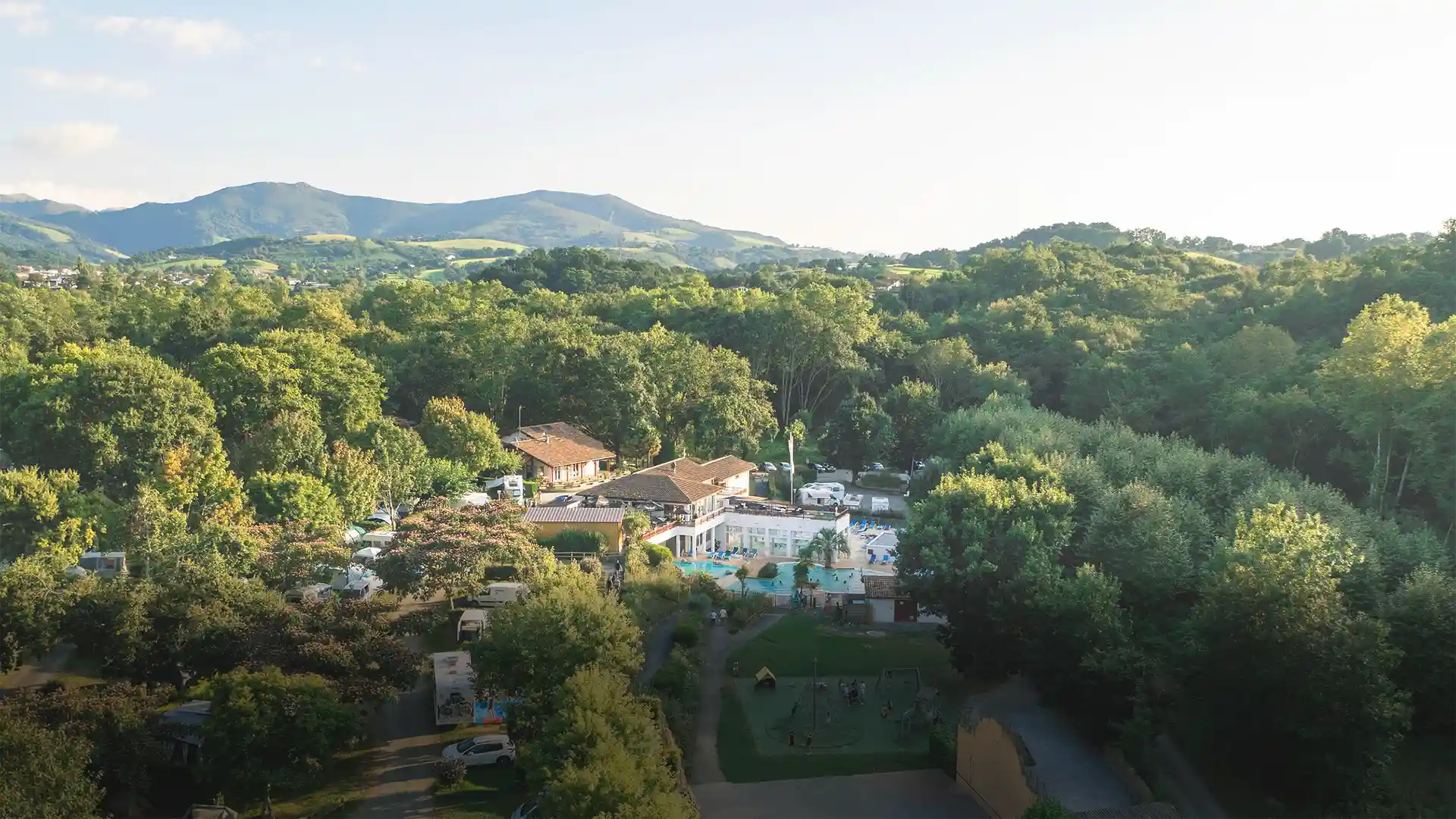What to do in Bayonne: must-see places to visit
Just 20 kilometers from Le Biper Gorri, Bayonne is the heart of the Basque Country. Known and recognized for its art of living, its impressive cultural heritage and its historic pedestrian districts, the capital of the Basque Country is a beautiful city of Art and History with Basque and Gascon influences, witness to more than 20 centuries of history. Discovery.

A stroll through Bayonne’s historic districts
Situated at the confluence of the Adour and Nive rivers, 30 minutes from Spain and 40 minutes from the Pyrenees, Bayonne is one of the must-sees of your stay in the Basque Country. From the banks of the Nive to those of the Adour, from the Petit Bayonne district to the faubourg de Saint-Esprit, discover a cultural and festive city, proud of its traditions and its heritage, rich in 2,000 years of history. Starting with the Roman and medieval ramparts that surround the historic district of Greater Bayonne. Among the many treasures hidden within the ramparts is Bayonne’s Notre-Dame Cathedral, a UNESCO World Heritage Site. Its Gothic cloister is one of the largest in France. The Château-Vieux is another of Greater Bayonne‘s emblematic sites. A witness to the Basque city’s medieval history, the 12th-century fortress is now occupied by the 1st Marine Infantry Parachute Regiment.
Just a stone’s throw from the historic center, the Arènes district is one of Bayonne ‘s most popular tourist areas. If you love bullfighting, don’t miss a bullfight. Bayonne is France’s oldest bullfighting town, and the famous Fêtes de Bayonne are a must-see summer event in the Basque Country!
Located between the Adour and La Nive rivers, Petit Bayonne is another place to visit. It’s a typical Bayonne suburb, popular and lively, with numerous bars and restaurants, artists’ and designers’ studios, bookshops and second-hand booksellers. This ancient district is still home to old half-timbered houses painted red, brown, green or blue. A must-see stop for lunch is the trinquet Saint-André, a legendary spot in Petit Bayonne, where you can watch a “bare hands” game of Basque pelota (every Thursday at 4pm). Lovers of religious art will be delighted to visit thechurch of Saint-André, where they can admire a listed organ by Georges Wenner.
Then it’s on to the Saint-Esprit district, on the right bank of the Adour. An arched bridge over the river links the city center to this picturesque Bayonnais district, built in the 12th century. Highlights include theSaint-Esprit church, home to the relics of Saint Irene, and a sumptuous carving of the “Flight into Egypt”, known as “Saint Bernard’s donkey”. Continue your tour to the Citadelle de Bayonne, a masterpiece of military architecture built by Vauban in 1680 to reinforce the city’s defenses, making Bayonne a veritable fortress city with a reputation for impregnability.
If you have time, make a detour to the Saint-Étienne district, home to France’s oldest Jewish cemetery and one of the largest in Europe. Located on the outskirts of the town, the Château de Marracq, whose majestic ruins will appeal to the most romantic of visitors, is also well worth a visit. Napoleon I made it one of his imperial palaces, preferring it to the Château-Vieux. Built by Marie-Anne de Neubourg, Queen of Spain in exile, it burned down in 1825.
A little tour of the museums…
Bayonne is home to a number of museums that testify to the city’s cultural richness. The Musée Basque et de l’histoire de Bayonne unveils its historiographic and ethnographic collection dedicated to the French Basque Country. The Musée des Beaux-Arts presents a remarkable collection of nearly 7,000 works, including paintings, old drawings and sculptures, built up between 1880 and 1900. Less well known, but just as interesting, is the Bayonne Natural History Museum’s exhibition on the flora and fauna of the Nive barthes , as well as the biodiversity of the Pyrenees Océanes. And if you want to learn all about the history of Bayonne Ham, a visit to the little museum at Maison Aubard is a must! Bayonne means ham, but it also means… chocolate! Founded by the Andrieu family in 1951, L’Atelier du Chocolat now houses a museum dedicated to the history of cocoa and chocolate processing. It features ancient chocolate-making machines and cacao trees in a tropical jungle setting. Bayonne ‘s chocolate-making tradition dates back to the early 17th century. Fleeing the Inquisition, Portuguese Jews settled in Bayonne’ s Saint-Esprit district, bringing with them the secrets of chocolate-making.
photo©Pierre-Alex


